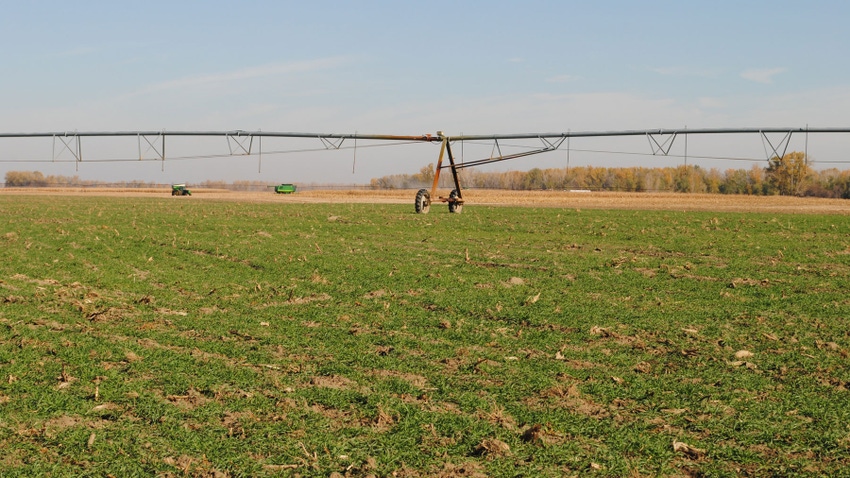
Producers know that increasing biomass from cover crops offers a multitude of benefits — including better weed suppression in the next row crop, erosion prevention, capturing excess nutrients and improved soil health.
“Biomass often drives the benefits we see, so in general the more biomass, the more benefits,” says Chris Proctor, Nebraska Extension weed management educator.
Talking about demonstrations and research conducted at Soybean Management Field Day sites in 2021, Proctor notes some important findings and opportunities that can offer those benefits while still working into a normal production system. On the 2021 field day sites, Proctor noted that the earlier the cover crop is planted in the fall, the more biomass that is produced in the spring.
Plant early or terminate late
“When we planted cover crops in late September, we had about 1 ton of biomass in those fields by April 11,” Proctor says. “As we progress into October with the cover crop planting dates, the biomass drops off pretty dramatically.”
The other way to increase biomass would be to terminate later in the spring and delay soybean plantings.
“Comparing cover crop planting dates from early to mid-November in the fall, we wanted to know what the impact would be if we terminated two weeks before planting soybeans or waited until right before planting, ranging from May 8 to May 17,” Proctor says. “In the case of cover crops of either rye or wheat, waiting two weeks to terminate to just before planting doubled the biomass, improving biomass production significantly.”
Proctor doesn’t advocate for adopting these practices for all management scenarios, but the research shows the potential benefits and how such treatments can improve biomass significantly. The trick is finding the most effective ways to gather those benefits, while balancing the need to maintain crop production.
“We know that early cover crop planting in the fall or delayed termination in the spring increases biomass,” Proctor says, “but we have to figure out how to best integrate those concepts into our cropping systems.”
In 2021, researchers looked at different fall cover crop planting strategies. They planted cereal rye at 60 pounds per acre between Nov. 3 and Nov. 6 across the sites using two different methods.
They drilled the rye at 7.5-inch spacing, and they also tried planting with a 10-inch drill, plugging the hole where the soybeans will be planted next spring to offer a banded cover crop approach. Two methods of termination were tried — broadcast herbicide application and applying preemergent herbicide right after soybean planting in the spring in a 10-inch band over the soybean row.
Get more biomass
The idea behind the research was that allowing the cover crop to continue to grow between the soybean rows would improve biomass production compared to the broadcast termination, offering more benefits of the cover crops, even if they were not planted early in the previous fall.
The findings were that the banded approach worked, improving biomass production. “The interesting thing about this system,” Proctor says, “is that if we look at weed biomass at these locations, where at one site there was heavy Palmer amaranth pressure, compared with where there were no cover crops, there was much more weed biomass.”
In the areas where the cover crops were allowed to continue to grow between soybean rows until a postemergence termination application, the mat of cover crop residue left behind almost completely suppressed the Palmer amaranth.
While more research is needed, this research proved that finding a balanced approach and using different methods to achieve cover crop biomass can work toward all of the major benefits of planting the cover crops in the first place, including more challenging weed management situations in soybean fields and suppressing even tough weeds such as Palmer amaranth.
Learn more by emailing Proctor at [email protected].
About the Author(s)
You May Also Like






